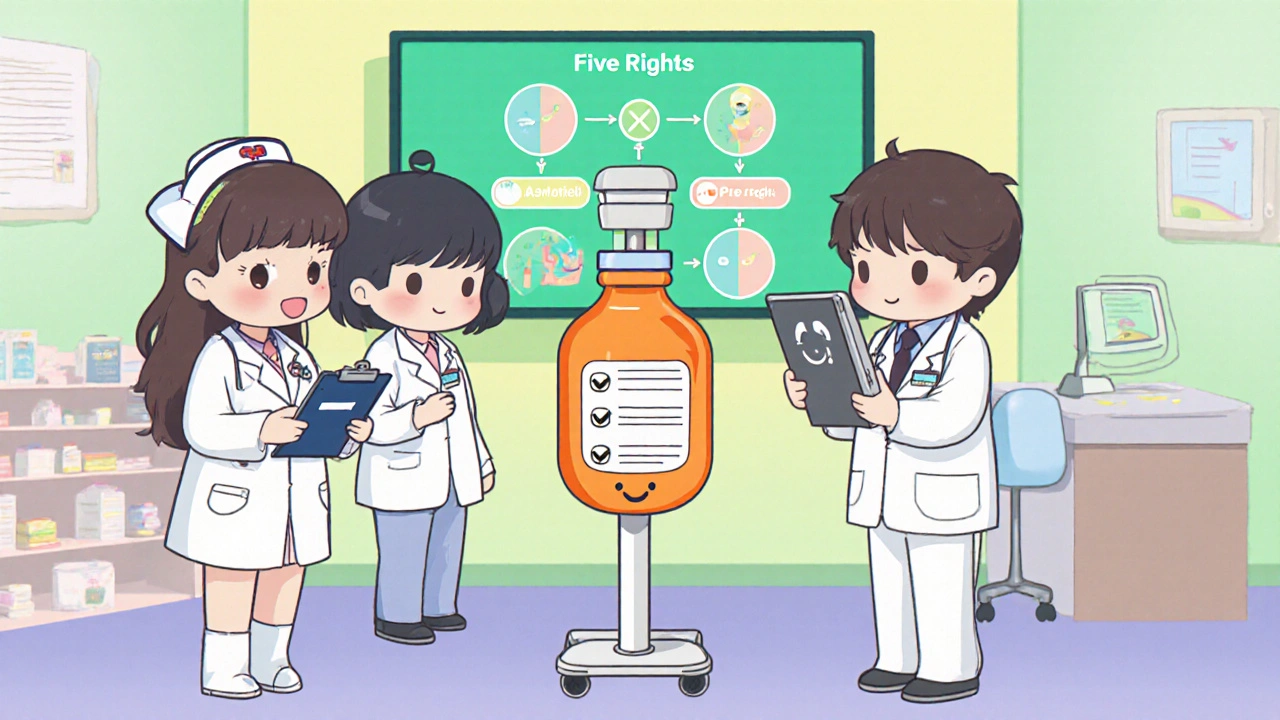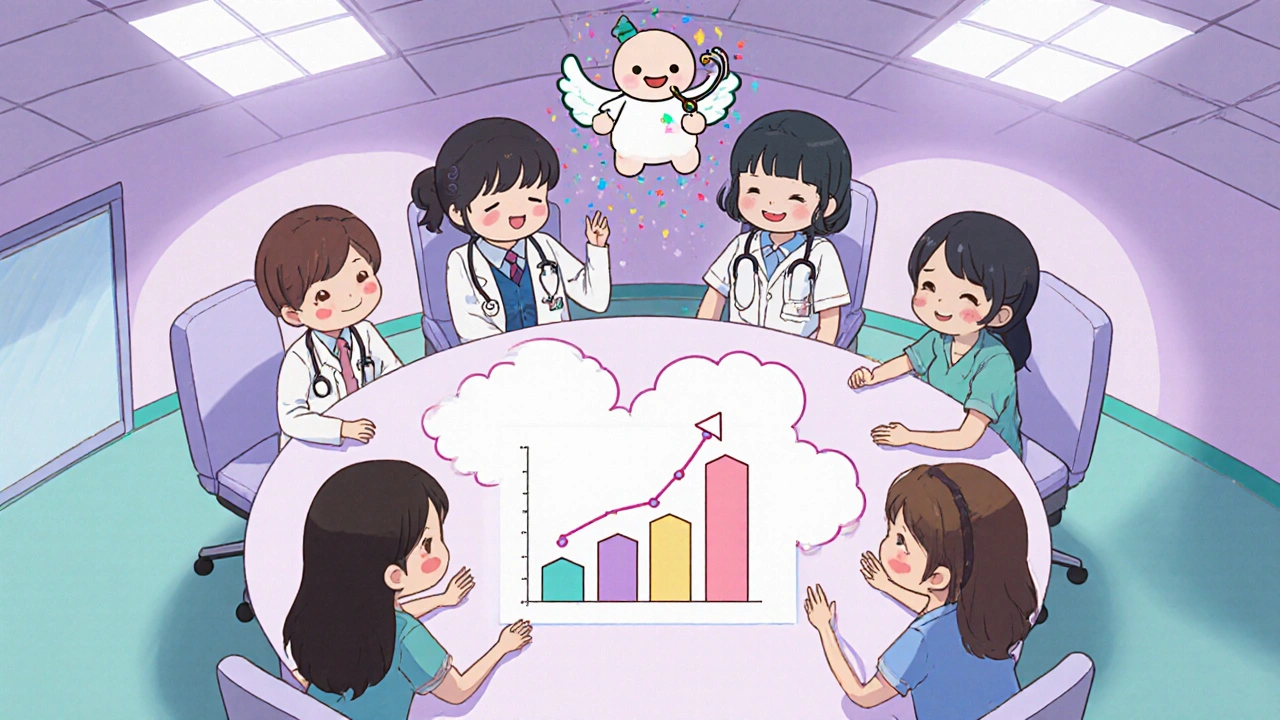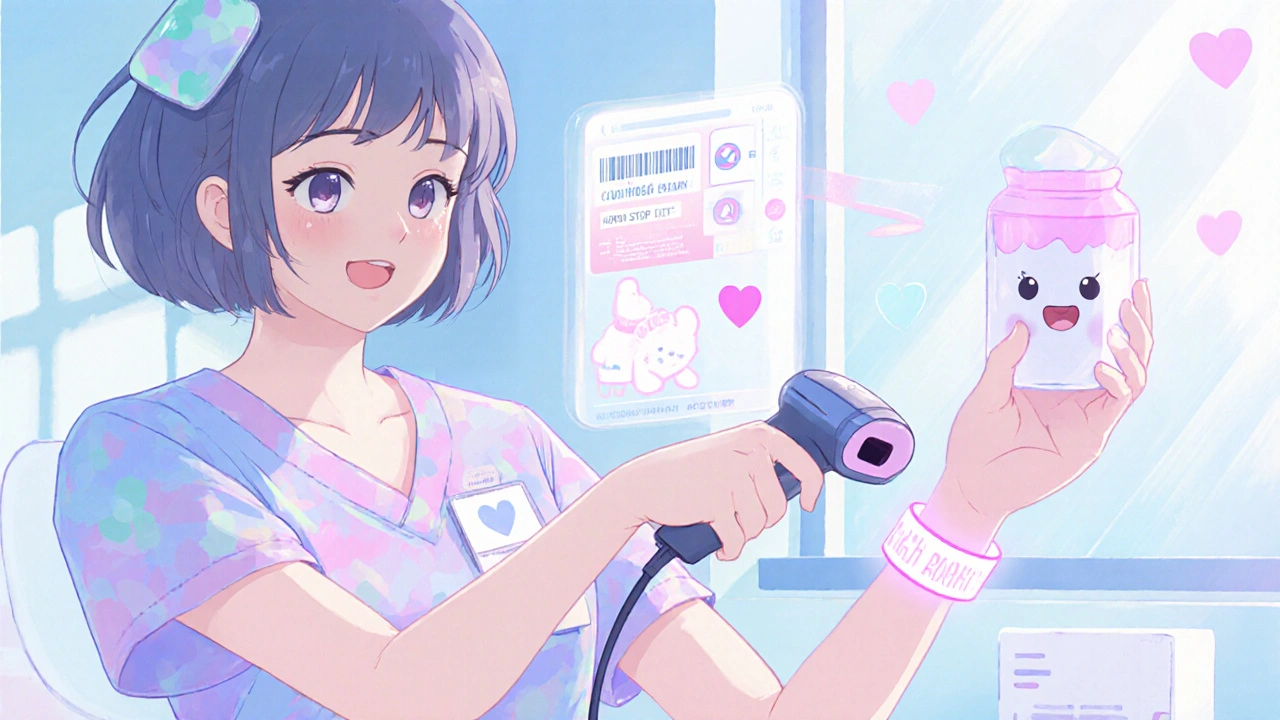Medication Safety ROI Calculator
Results
Estimated annual error reduction: 0 errors
Potential annual savings: $0
Implementation cost: $0
Payback period: N/A
Key Takeaways
- Standardized electronic order entry, barcode scanning, and thorough medication reconciliation cut errors by up to 60%.
- Initial training of 16‑24 hours plus 8 hours of annual refreshers is the proven baseline.
- High‑alert drugs need dedicated protocols and double‑checks.
- Alert fatigue and poor usability are the biggest technology pitfalls - address them with smart thresholds and user‑centered design.
- Track success with error‑per‑100‑orders rates and safety‑culture surveys; aim for medication safety scores in the 75th percentile.
Medication errors still cause more than a million injuries and thousands of deaths each year in the United States alone. For clinicians on the front line, the challenge isn’t just catching a mistake after it happens - it’s building a system that prevents the slip in the first place. This guide walks you through the most effective safety practices, the training schedule that keeps staff sharp, and the tech solutions that really work without flooding you with useless alerts.
Medication Safety is a systematic approach that aims to prevent errors and minimize risk throughout the medication-use process. It includes accurate drug selection, correct dosing, right‑time administration, and proper route delivery, all backed by clear documentation and verification. The World Health Organization (WHO) frames it as a “critical component of healthcare” that ensures patients reap therapeutic benefits while avoiding avoidable harm.
In practice, medication safety is a multidisciplinary effort. Nurses, physicians, pharmacists, and IT staff each play a distinct role, but they all share the same goal: zero preventable harm from medicines.
Core Best Practices That Deliver Results
Research from the Institute for Safe Medication Practices (ISMP) and the Agency for Healthcare Research and Quality (AHRQ) shows that a bundle of proven interventions can slash error rates from nearly six per 100 orders to about one. Below are the five pillars you should embed in every care setting.
1. Standardized Electronic Order Entry with Smart Clinical Decision Support
Electronic Health Record (EHR) an integrated digital system that captures, stores, and shares patient health information, including medication orders systems should enforce hard stops for high‑risk scenarios-such as requiring a documented oncologic indication before a daily oral methotrexate order can be submitted. Real‑time alerts for drug‑drug interactions, dose‑range violations, and duplicate therapy have been shown to cut prescribing errors by up to 48%.
2. Barcode‑Assisted Medication Administration (BCMA)
Barcode Medication Administration a point‑of‑care technology that verifies the five rights-patient, drug, dose, route, and time-by scanning barcodes on the patient wristband and medication demands a 100 % scan compliance policy. When fully implemented, BCMA reduces administration errors by roughly 41 % and is a key requirement in the Joint Commission’s National Patient Safety Goal NPSG.01.01.01.
3. Comprehensive Medication Reconciliation at Every Transition
Every time a patient changes settings-admission, transfer, discharge-teams must compare the current medication list against the patient’s actual regimen, documenting any discrepancies. AHRQ data indicate that hospitals with formal reconciliation processes experience 63 % fewer serious medication errors than those without.
4. Dedicated Protocols for High‑Alert Medications
Drugs such as intravenous oxytocin, insulin, and chemotherapy agents carry a heightened risk of harm. ISMP recommends double‑checks, standardized concentration charts, and independent verification by a pharmacist before these orders are administered.
5. Non‑Punitive Reporting and Team Communication
Encouraging staff to report near‑misses without fear of blame fuels a learning culture. The National Patient Safety Foundation stresses that transparent reporting, followed by root‑cause analysis, drives continuous improvement and keeps error‑prone processes visible.
Training Blueprint for Healthcare Providers
Even the best technology fails without skilled users. AHRQ’s Patient Safety Network outlines a clear training arc:
- Initial onboarding: 16-24 hours covering medication safety fundamentals, EHR navigation, BCMA workflow, and high‑alert drug protocols.
- Simulation drills: Scenario‑based exercises (e.g., mock code for a wrong‑dose infusion) that let clinicians practice responses in a risk‑free environment.
- Annual refreshers: 8 hours focused on updates to guidelines, new drug entries, and emerging technology like AI‑assisted prescribing.
- Targeted booster sessions: Short, role‑specific modules (e.g., pharmacists leading dose verification workshops).
Key competencies to assess during training include:
- Proficiency with EHR safety alerts and how to interpret them.
- Understanding of the five rights and the BCMA scanning process.
- Effective communication techniques for medication reconciliation hand‑offs.
- Recognition of high‑alert medication risks and required double‑check steps.
Resistance to change is common-42 % of nursing staff initially push back against BCMA because of perceived workflow disruption. Studies show that with clear leadership support, hands‑on practice, and visible leadership endorsement, compliance climbs to 95 % within six months.

Technology Integration: Benefits and Pitfalls
Smart tools are powerful, but they can backfire if not managed properly.
Alert Fatigue
When clinicians receive more than 20 alerts per patient encounter, they override 49‑96 % of them. To keep alerts meaningful, apply tiered severity levels and suppress low‑risk notifications that duplicate existing checks.
EHR Usability
Incorrect default values and poorly designed dropdown menus generate about a third of digital medication errors. Involve frontline staff in configuration testing to catch hidden pitfalls before go‑live.
Cost Considerations
Installing a BCMA system in a 300‑bed hospital can range from $250,000 to $1.2 million, plus 15‑20 % annual maintenance. Weigh these upfront costs against projected savings from reduced adverse events-each serious error avoided can save roughly $15,000 in downstream treatment costs.
AI‑Assisted Prescribing
Early pilots show AI models spotting 89 % of potential prescribing errors before they reach the bedside, outpacing traditional decision support (67 %). However, over‑reliance raises new safety concerns; the FDA recorded a 37 % jump in EHR‑related adverse events between 2021 and 2022.
Measuring Success and Continuous Improvement
Implementing best practices isn’t a one‑time checklist; you need ongoing metrics.
- Error‑per‑100‑orders rate: Aim for ≤1.2 after 12 months of full implementation.
- Safety‑culture surveys: Use AHRQ’s Hospital Survey on Patient Safety Culture; target scores in the 75th percentile for “teamwork across units” and “organizational learning”.
- Compliance rates: Track BCMA scan compliance, EHR alert acknowledgement, and medication reconciliation completion percentages.
Case studies reinforce the impact. At Johns Hopkins, embedding pharmacists in intensive care units cut medication errors by 81 % through real‑time verification. The Veterans Health Administration’s rollout of computerized provider order entry (CPOE) with decision support slashed serious errors by 55 % across 127 facilities.
Practical Checklist for Immediate Action
- Adopt a unified EHR with configurable hard stops for high‑risk drugs.
- Deploy BCMA hardware and enforce 100 % scanning compliance.
- Standardize medication reconciliation forms for admission, transfer, and discharge.
- Develop high‑alert medication protocols-including double‑check sign‑offs.
- Launch a non‑punitive reporting platform and schedule quarterly root‑cause reviews.
- Roll out the 16‑24 hour onboarding curriculum, followed by annual 8‑hour refreshers.
- Monitor alert overrides; refine thresholds to keep override rates below 30 %.
- Quarterly review error‑per‑100‑orders data and adjust processes accordingly.

Frequently Asked Questions
What is the most critical first step for a hospital starting a medication safety program?
Begin with a comprehensive medication safety assessment using the AHRQ safety‑culture survey, then prioritize implementing standardized electronic order entry with hard stops for high‑alert drugs.
How many training hours are recommended for new clinicians?
AHRQ recommends 16-24 hours of initial medication‑safety training, followed by an 8‑hour refresher each year.
Can barcode scanning really prevent most medication errors?
When used correctly, BCMA eliminates about 41 % of administration errors and is essential for verifying the five rights at the bedside.
What should be done about alert fatigue?
Implement tiered alert severity, suppress low‑risk warnings, and regularly review override data to fine‑tune the decision‑support rules.
How can we involve pharmacists in medication safety?
Place pharmacists in high‑risk units for real‑time order verification, lead high‑alert medication protocols, and run quarterly medication‑error case reviews.
Tool Comparison: Which Technology Fits Your Setting?
| Tool | Primary Function | Typical Error Reduction | Typical Cost (USD) |
|---|---|---|---|
| Electronic Health Record with CDSS | Prescribing alerts, dose checks, interaction warnings | ~48 % | $500k-$2M (implementation) |
| Barcode‑Assisted Medication Administration (BCMA) | Five‑rights verification at bedside | ~41 % | $250k-$1.2M (300‑bed hospital) |
| Mobile Drug Reference Apps (e.g., Lexicomp) | Point‑of‑care dosing & interaction lookup | ~15-20 % | Subscription $40-$120/yr per clinician |
| AI‑Assisted Prescribing Engine | Predictive error detection before order finalization | ~89 % (potential detection) | Emerging - pilot pricing varies |
Choose the solution that matches your facility’s size, budget, and existing workflow. Many hospitals start with a robust EHR/CDSS, add BCMA for administration safety, and then layer AI tools as they mature.
Next Steps for Leaders
1. Conduct a baseline safety audit using the AHRQ medication‑error metrics.
2. Prioritize technology upgrades based on the comparison table above.
3. Roll out the structured training program within the next quarter.
4. Establish a monthly safety‑culture huddle to review alerts, overrides, and near‑misses.
5. Re‑measure error rates after 6 months and adjust protocols accordingly.
By weaving together proven practices, hands‑on training, and smart technology, you can move your organization closer to the WHO’s “Medication Without Harm” goal and protect the patients who depend on your care.







Mary Mundane
October 24, 2025Standardizing order entry is a no‑brainer; if you’re not doing it, you’re basically inviting mistakes.